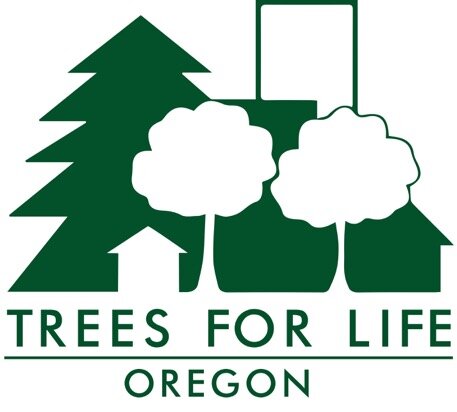City Council Candidate Responses to TFLO Questionnaire
Trees for Life Oregon elicited a 36 percent response rate from the 50 Portland City Council candidates to whom we sent our very first questionnaire, in April 2020, about City tree policies. Eighteen of the 50 responded.
The relatively high response rate and general agreement on key questions likely reflect that candidates who took the time to complete the survey, which contained lots of background information, are, by definition, concerned about Portland’s trees and green space. To be expected, their optional narrative responses illustrate various levels of knowledge about tree issues.
We deeply thank those who took the time to complete the questionnaire: Alicia McCarthy, Chloe Eudaly, Corrine Patel, Cynthia Castro, Diana Gutman, James “Jas” Davis, Julie DeGraw, Keith Wilson, Mark White, Mary Ann Schwab, Ozzie Gonzalez, Sam Adams, Sam Chase, Seth Woolley, Terry Parker, Tim DuBois, and Walker Wesley.
Strongest Consensus
All respondents answered “yes” to these questions:
Is climate change is enough of a threat to our health and well-being that you are willing to change business as usual in the City of Portland?
Can new housing and green infrastructure that includes space for large trees coexist? If yes, would you back strengthening our tree-related codes with the goal of preserving more trees and more space for trees?
Trees for Life Oregon has featured developers who have built their projects with trees in mind; do you believe that smart design can accommodate both new housing and trees?”
Trees currently do not enter the development site review process until after developers have invested time and money on project design, and after which it does not make economic sense for them to redesign around trees; to help preserve large-species trees, would you support changing the review process so that consideration for trees and building design occur at the same time?
In addition:
More than 94 percent answered “no” to “Do you feel the current tree code is up to the task of meeting Portland’s canopy goals as stated in the City’s 2015 Climate Action Plan and Comprehensive Plan 2035?”
More than 94 percent answered “yes” to “Do you support putting aside funds in the upcoming City budget for conducting an overhaul of the tree code, in order to make it a more effective tool in meeting the City’s stated canopy and green infrastructure goals?” Several respondents noted that finding such funds in the Covid-19 era will be difficult.
More than 87 percent responded “yes” to “Do you support the amendment to eliminate the exemption for developers of commercial and industrial sites to pay mitigation fees or any penalty for cutting down trees, or to adhere to tree planting density standards?”
More than 82 percent responded “no” to “Do you believe that Portland should prioritize reserving its limited space for new housing at the expense of green infrastructure?” (A puzzlingly low rate in light of how candidates answered related questions, perhaps reflecting their hesitation over choosing between housing and green infrastructure.)
Finally, almost 69 percent said “yes” to “Do you support the amendment to reduce the diameter threshold from 36 inches to 20 inches, beyond which developers must pay an inch-for-inch mitigation fee for chopping a tree down?”
Key Themes
Several themes emerged from the optional, longer responses some candidates provided. Below is a small sample of responses that speak to these issues. Trees for Life Oregon does not endorse political candidates; to access all 18 respondents’ questionnaire answers, click here for long answers.
The City needs to align codes to long-term plans.
“The City’s Climate Action Plan and Comprehensive Plan need to be data-driven…We need more fully funded actionable benchmarks, not just good intentions and written words on paper.” Julia DeGraw
“The problem isn’t limited to trees. Many parts of our long-term plans are inadequately addressed in code, and a community-led effort should be made to align our code and rules with long-term plans…In addition to code issues, we should have the Charter Review Commission develop charter changes that would guide code and plan alignment, [and] reinforce the rights of nature so that citizens can challenge misaligned code directly.” Seth Woolley
Larger goals can’t be achieved unless City bureaus hew equally and in a coordinated way to reach agreed upon outcomes set by City leaders. Portland’s unusual commission form of government stifles such coordination and, unfortunately, is unlikely to change anytime soon.
“I strongly advocate a new form of government that will force more transparency, oversight, and coordination…I will fight for a coordinated canopy and greening strategy among the bureaus.” Sam Chase
“Portland’s commission-style government is notorious for creating siloed bureaus that often overlap…we need to act as a team aligned on achieving our climate goals.” Sam Adams
“I'd…be in favor of a city manager type of reform where we'd have less fracturing between bureaus and offices. Our form of government makes it difficult to align bureaus to work on cross-cutting issues because commissioners learn to use their bureau assignments as leverage for their own more narrow political ambitions, making it difficult to get across-the-board reforms implemented.” Seth Woolley
Tree Are an Environmental Justice Issue
“Parts of Portland have less tree canopy than Los Angeles. We need to correct these inequities so that all Portlanders have access to healthy, vibrant neighborhoods.” (She supports an additional staff person for Parks’ Urban Forestry to work with City Council offices and to address the gaps in the current tree code and analyze what has been done so far.) Cynthia Castro
Trees Need to be Integrated into Development Design Early On
“Trees could play an important (potentially exciting) role in the design if taken into account from the start. Developers should be required to [do that].” Julia DeGraw
Perhaps the most important outcome of the questionnaire is to let City Council candidates know that Portlanders care deeply about protecting large-form trees and the space they need, and that we are watching what current and future commissioners will be doing to address our concerns.
